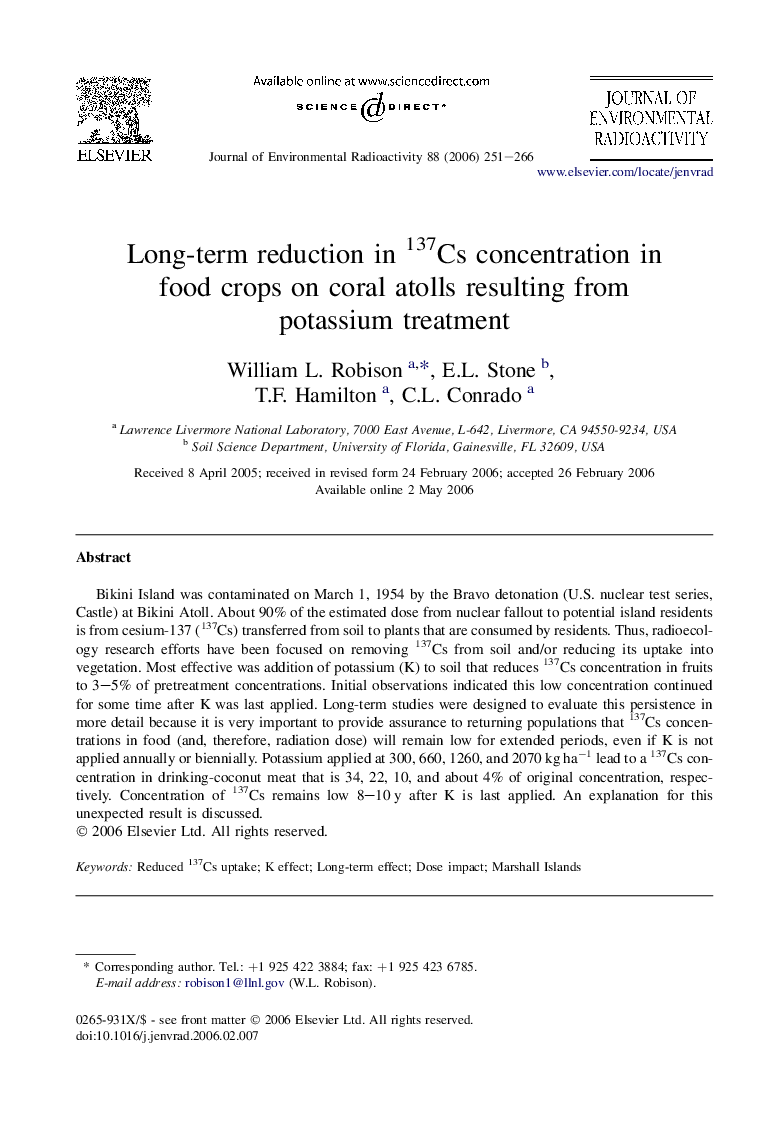| کد مقاله | کد نشریه | سال انتشار | مقاله انگلیسی | نسخه تمام متن |
|---|---|---|---|---|
| 1739583 | 1016867 | 2006 | 16 صفحه PDF | دانلود رایگان |

Bikini Island was contaminated on March 1, 1954 by the Bravo detonation (U.S. nuclear test series, Castle) at Bikini Atoll. About 90% of the estimated dose from nuclear fallout to potential island residents is from cesium-137 (137Cs) transferred from soil to plants that are consumed by residents. Thus, radioecology research efforts have been focused on removing 137Cs from soil and/or reducing its uptake into vegetation. Most effective was addition of potassium (K) to soil that reduces 137Cs concentration in fruits to 3–5% of pretreatment concentrations. Initial observations indicated this low concentration continued for some time after K was last applied. Long-term studies were designed to evaluate this persistence in more detail because it is very important to provide assurance to returning populations that 137Cs concentrations in food (and, therefore, radiation dose) will remain low for extended periods, even if K is not applied annually or biennially. Potassium applied at 300, 660, 1260, and 2070 kg ha−1 lead to a 137Cs concentration in drinking-coconut meat that is 34, 22, 10, and about 4% of original concentration, respectively. Concentration of 137Cs remains low 8–10 y after K is last applied. An explanation for this unexpected result is discussed.
Journal: Journal of Environmental Radioactivity - Volume 88, Issue 3, 2006, Pages 251–266